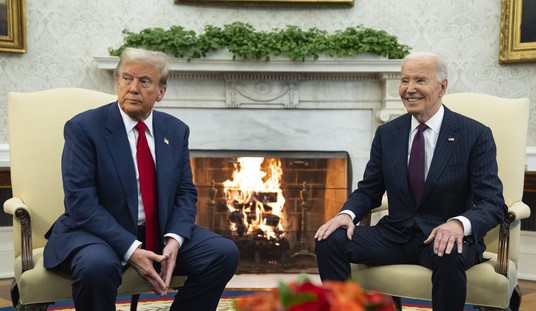Remember when the outgoing administration insisted that the existing refugee vetting system provided enough security for Americans to support a larger number of entries? According to Reuters’ sources on Capitol Hill, that may depend on the scope of security one expects. Of a thousand targets of active FBI counterterrorism probes, three hundred involve refugees:
BREAKING: FBI investigating 300 people admitted to the U.S. as refugees in current counterterrorism probes – congressional sources
— Reuters U.S. News (@ReutersUS) March 6, 2017
The FBI is investigating 300 people who were admitted into the United States as refugees as part of 1,000 counterterrorism investigations involving Islamic State or individuals inspired by the militant group, congressional sources told Reuters on Monday, citing senior administration officials.
Jeff Sessions later confirmed this during a press conference about the new travel “ban” executive order:
Sessions: "More than 300 people…who came here as refugees are under an FBI investigation today for potential terrorism-related activities" pic.twitter.com/027rfUPQSJ
— Fox News (@FoxNews) March 6, 2017
So far, there aren’t any more details forthcoming on these cases, and … there’s not likely to be, either. The FBI doesn’t usually comment on ongoing investigations (insert laugh track here), and particularly not when they are tracking potential terror sympathizers and/or recruits. Needless to say, this provides a rather stark backdrop to Donald Trump’s new executive order restricting entry to the US from a handful of high-risk nations — and that’s certainly the intent of the leak.
This leaves us with two ways to look at this information: the glass-half-full take, and the glass-half-empty take. Glass half full: The US admitted tens of thousands of refugees every year even under the Bush administration, although Obama increased the cap in 2014 from 50,000 to 100,000. Even in a single year, three hundred cases among 100,000 means 99.7% of these were not problematic at all, and shows that the vetting system works. The new improvements mean we’ll do even better, and refugees don’t even make up a third of all current FBI counterterrorism probes.
Glass half empty: First, these are just the 300 of whom the FBI has become aware. In an age of terror, it doesn’t take more than a handful to get together to conduct major operations that could pt thousands or more at risk. The 9/11 attacks only took 19 terrorists, for instance, even if none of them came from the countries targeted by Trump’s EO. In Europe, cells much smaller than this number continue to conduct major attacks on population centers.
Putting aside these two approaches, the scale does show that admitting refugees from areas where terrorists operate openly does present some heightened risk to host nations. Stepping back for 90 days to review and update screening, especially with the current 300 investigations under way as a guide, does not seem an unreasonable response to those potential threats, especially if the improvements in the process allow us to rescue real refugees who need security and safety after the pause ends. After all, they may be most at risk in the short run, for potential recruitment and for blackmail from terrorist infiltrators. Better to stop them before they get into the refugee stream at all where possible.
Interestingly, Trump didn’t make today’s signing a public event. Instead, the White House used the staff photographer to commemorate the signing in the Oval Office, and released the text of the EO to the media:
White House releases presidential memorandum implementing heightened screening and vetting of visas, immigration. https://t.co/0ntczZCWmU pic.twitter.com/HxFf6jl36l
— ABC News (@ABC) March 6, 2017








Join the conversation as a VIP Member